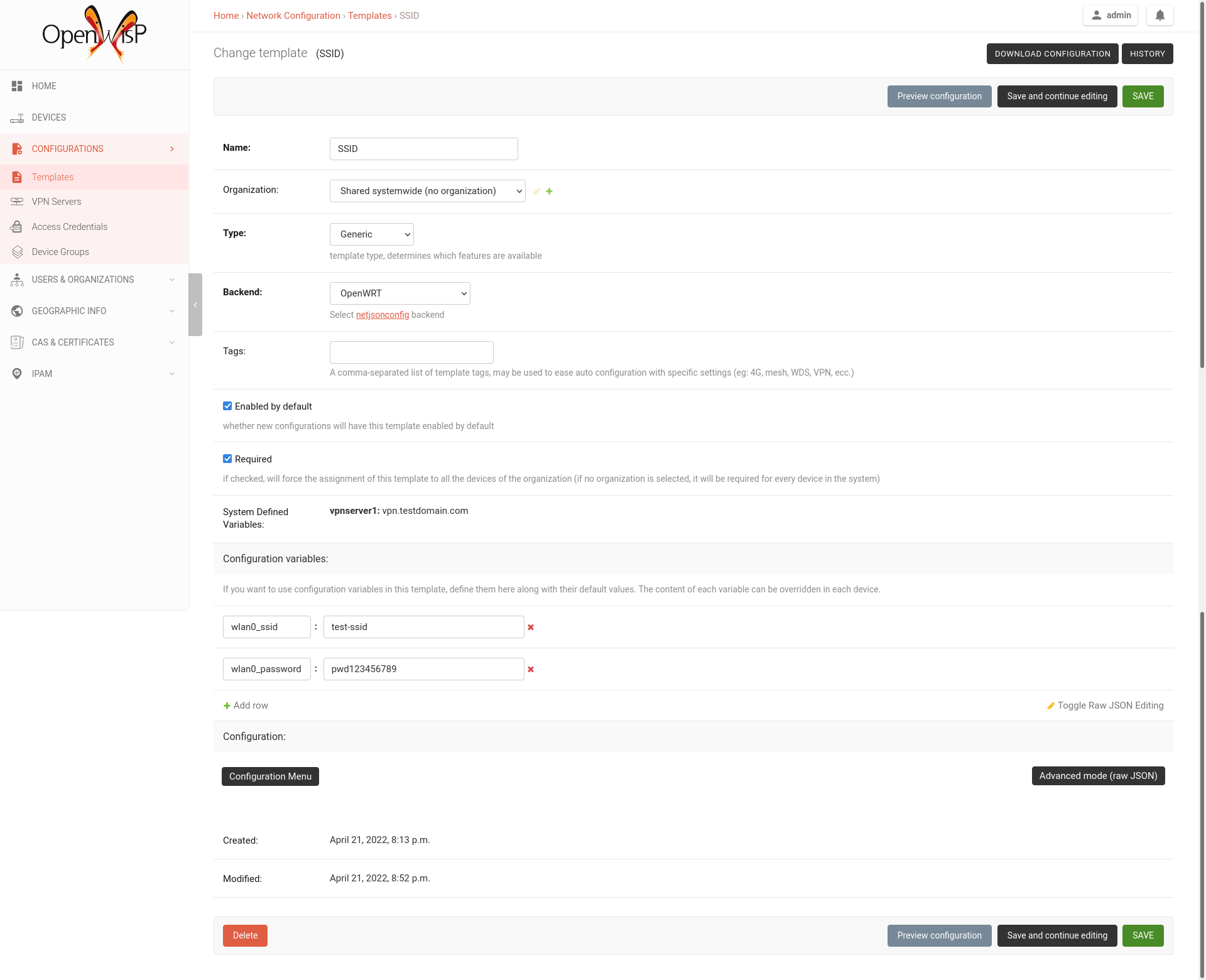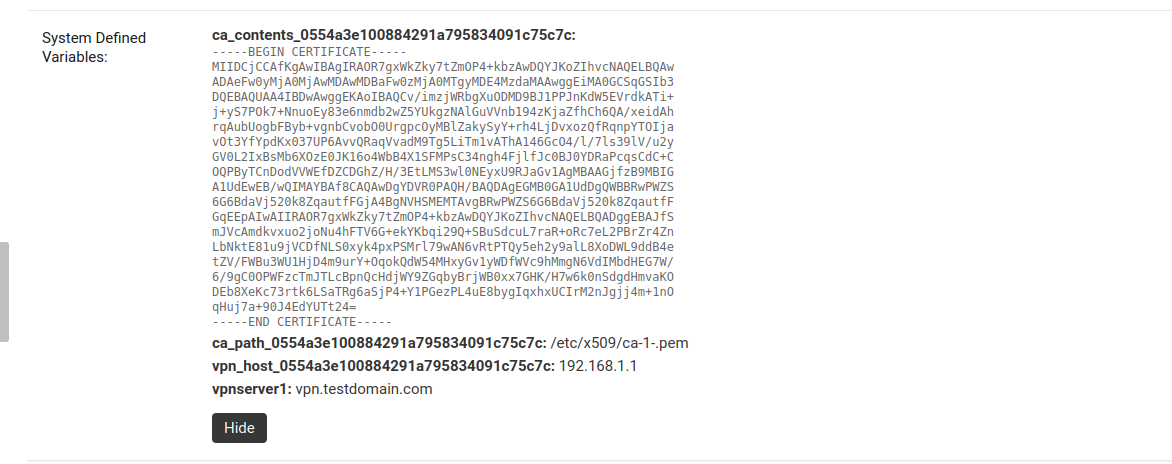How to Use Configuration Variables
Sometimes the configuration is not exactly equal on all the devices, some parameters are unique to each device or need to be changed by the user.
In these cases it is possible to use configuration variables in conjunction with templates, this feature is also known as configuration context, think of it like a dictionary which is passed to the function which renders the configuration, so that it can fill variables according to the passed context.
The different ways in which variables are defined are described below.
Predefined device variables
Each device gets the following attributes passed as configuration variables:
idkeynamemac_address
User defined device variables
In the device configuration section you can find a section named "Configuration variables" where it is possible to define the configuration variables and their values, as shown in the example below:

Template default values
It's possible to specify the default values of variables defined in a template.
This allows to achieve 2 goals:
pass schema validation without errors (otherwise it would not be possible to save the template in the first place)
provide good default values that are valid in most cases but can be overridden in the device if needed
These default values will be overridden by the User defined device variables.
The default values of variables can be manipulated from the section "configuration variables" in the edit template page:

Global variables
Variables can also be defined globally using the OPENWISP_CONTROLLER_CONTEXT setting.
System defined variables
Predefined device variables, global variables and other variables that are automatically managed by the system (e.g.: when using templates of type VPN-client) are displayed in the admin UI as System Defined Variables in read-only mode.

Example usage of variables
Here's a typical use case, the WiFi SSID and WiFi password. You don't want to define this for every device, but you may want to allow operators to easily change the SSID or WiFi password for a specific device without having to re-define the whole wifi interface to avoid duplicating information.
This would be the template:
{
"interfaces": [
{
"type": "wireless",
"name": "wlan0",
"wireless": {
"mode": "access_point",
"radio": "radio0",
"ssid": "{{wlan0_ssid}}",
"encryption": {
"protocol": "wpa2_personal",
"key": "{{wlan0_password}}",
"cipher": "auto"
}
}
}
]
}
These would be the default values in the template:
{
"wlan0_ssid": "SnakeOil PublicWiFi",
"wlan0_password": "Snakeoil_pwd!321654"
}
The default values can then be overridden at device level if needed, e.g.:
{
"wlan0_ssid": "Room 23 ACME Hotel",
"wlan0_password": "room_23pwd!321654"
}